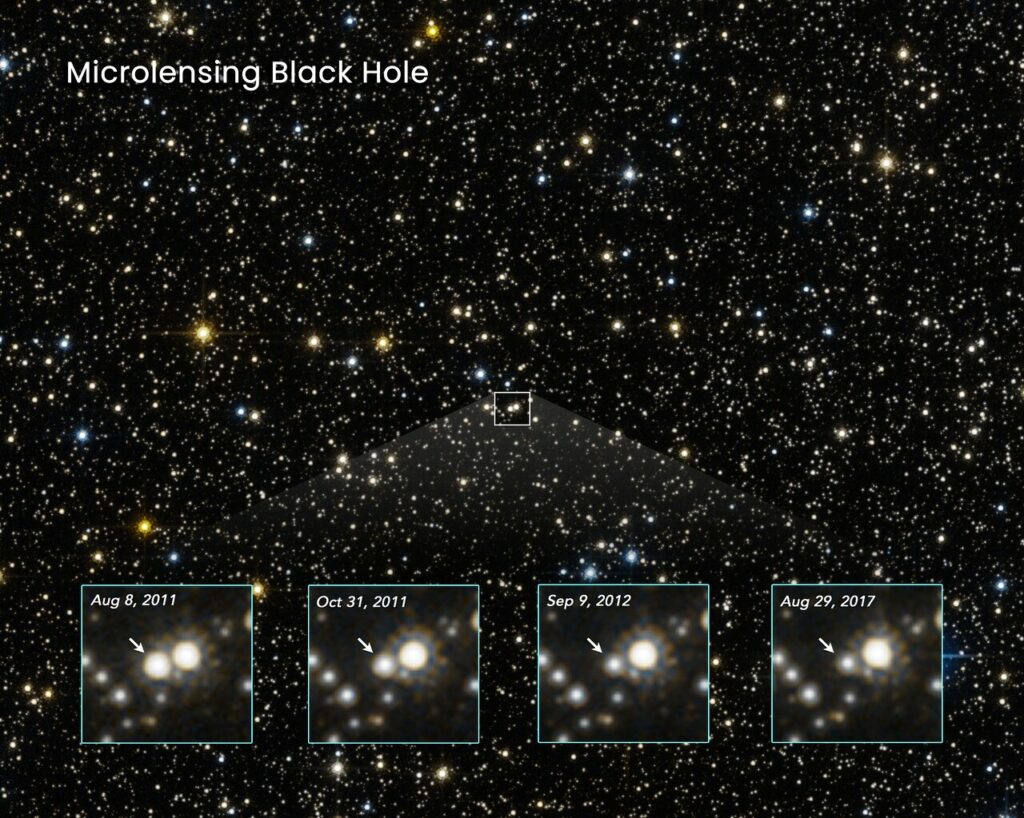
A shocking amount of astronomy is trying to figure out what is out there refusing to be seen. From hidden stars to hidden matter, researchers are turning to the forces to find what’s missing. From those kinked magnetic fields to gravity pointing out hidden mass, the forces can show us what light sometimes leaves hidden.
In an ongoing study, researchers image the sky toward the densely packed center of our galaxy on a regular basis looking for distant stars to suddenly brighten as a relatively nearby star passes between us and it. This geometry allows the nearer object’s gravity to bend light that would normally head off toward other parts of the galaxy toward us, creating the brightening. This has proven to be a great way to get a census of the small and the faint that otherwise would go unnoticed. And since objects of different masses are able to bend different amounts of light, this technique allows us to get a sense of how big all those not-exactly shiny objects may be.
In 2011, a brightening event of unusual size was spotted. For 270 days, something radically brightened a background star, and in the decade since that initial brightening, researchers have leveraged both ground and space-based telescopes to figure out exactly what was responsible. During the brightening event, researchers saw none of the normal color variations that occur when a faint foreground star mixes its light with a background object. Whatever this object is, it is dark.
Observations have shown the light of the background object goes from radically brightened to appearing in a new and changing position. This evolving offset from where it had previously been mapped is another consequence of gravity. A large enough mass will warp space and distort positions the same way a funhouse mirror can distort your face. By watching how these distortions evolved, it became possible to calculate the hidden mass’ size and motion.
And here is where things get messy. This object was studied by two different teams, and one team determined the best fit solution that has the object fairly nearby, flying along at under 30 km/s and having a mass of 1.6-4.4 times the mass of our Sun. This kind of mass means it is either a neutron star or a small black hole.
A different team instead finds a larger distance, a speed of more like 45 km/s, and a mass of more than seven solar masses. Both these scenarios are consistent with a massive star dying as a supernova and the energy of that supernova rocketing the remaining stellar core on a trajectory across the galaxy. If this is a neutron star, this is the first neutron star found using just gravity. If this is a black hole, this is the first black hole found without a companion.
It is unknown how many black holes may be out there, rocketing through space darkly. The number is not small, but at least one of them may have finally been found.
The results of these two teams are published in a pair of papers available on arxiv.org and led by Kailash Sahu and Casey Lam.
More Information
ESA Hubble press release
Hubblesite press release
NASA press release
UC Berkeley press release
“An Isolated Stellar-Mass Black Hole Detected Through Astrometric Microlensing,” Kailash C. Sahu et al., to be published in The Astrophysical Journal (preprint)
“An isolated mass gap black hole or neutron star detected with astrometric microlensing,” Casey Y. Lam et al., to be published in The Astrophysical Journal Letters (preprint)




 Join the Crew!
Join the Crew!
 Escape Velocity Space News
Escape Velocity Space News
0 Comments